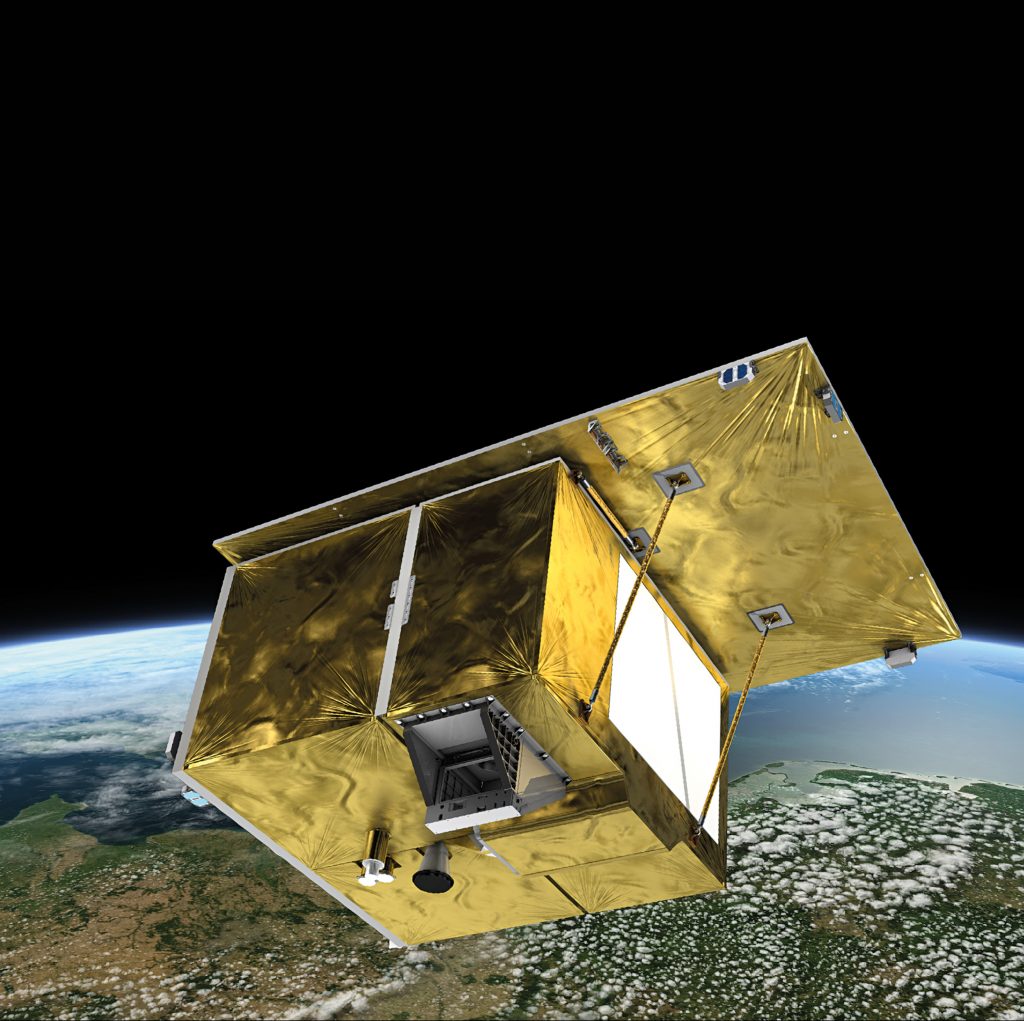Germany’s hyperspectral satellite
EnMAP (Environmental Mapping and Analysis Program) is Germany’s hyperspectral satellite mission for Earth observation. Imaging spectrometers will measure the sunlight reflected from Earth across a wide range of wavelengths from the visible to the short wave infrared. This will make it possible to accurately study the condition of Earth’s surface, and the changes affecting it. The mission is scheduled for launch in 2020 and is designed to operate for fve years. EnMAP data should help to fnd global answers to a range of questions dedicated to environmental, agricultural, land use, water management and geological issues. Conventional multi-spectral sensors record radiation reflected from Earth in a small number of broad spectral channels. They deliver reliable data and information, for example, about land coverage and its spatial distribution. However, quantitative information such as the provision of nutrients to crops, water quality of lakes or the identifcation of the mineralogy in rocks and soil demands higher-resolution spectral data.
EnMAP will carry a ‘hyperspectral instrument’ – essentially a spectrometer that depicts Earth’s surface by contiguous spectra assembled by about 250 narrow bands. This will provide detailed information about vegetation, land use, surface rocks and waterways. The data can be used to provide information about the mineralogical composition of rocks, the damage to plants caused by pollution and the degree of soil pollution, among other applications.
EnMAP will fly at a Sun-synchronous orbit at a height of 643 kilometres above the Earth, recording data with a 30 x 30 metre ground resolution. Using a tilting mode of plus minus 30 degrees perpendicular to the flight path, this allows to acquire data over any point on Earth within a four-day period. This will make it suitable for recording changes that occur over time, such as the effects of erosion or the growth seasons of vegetation, as well as providing insight into how the ecosystems in many different natural environments are distributed and how they evolve or are being created.
German Aerospace Center (DLR)
Sebastian Fischer · E-Mail: sebastian.fischer@dlr.de · DLR.de/en
